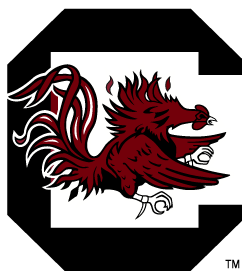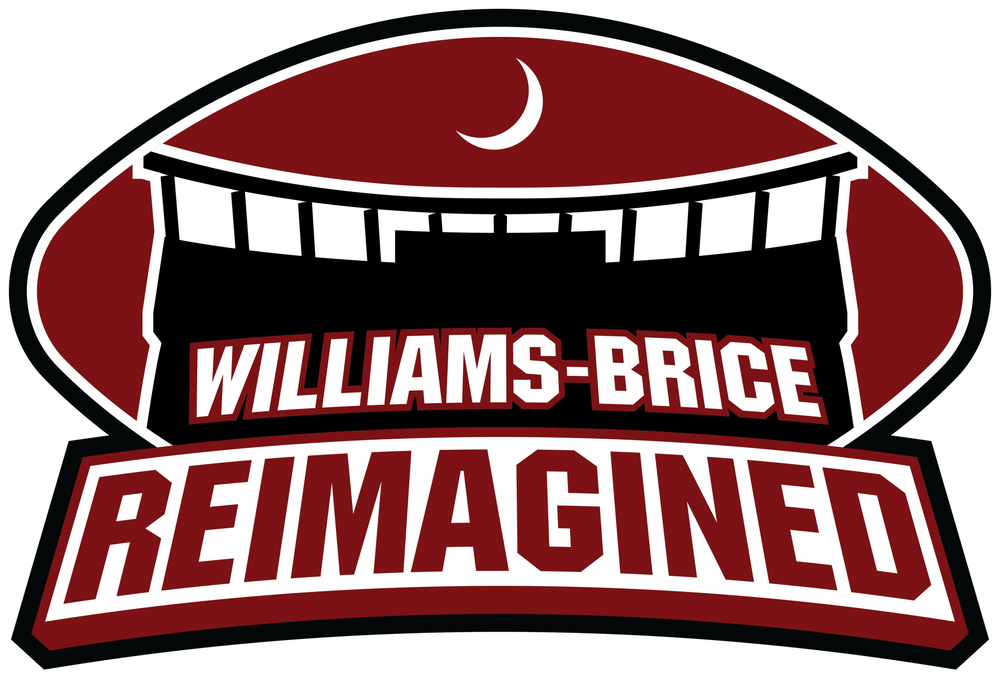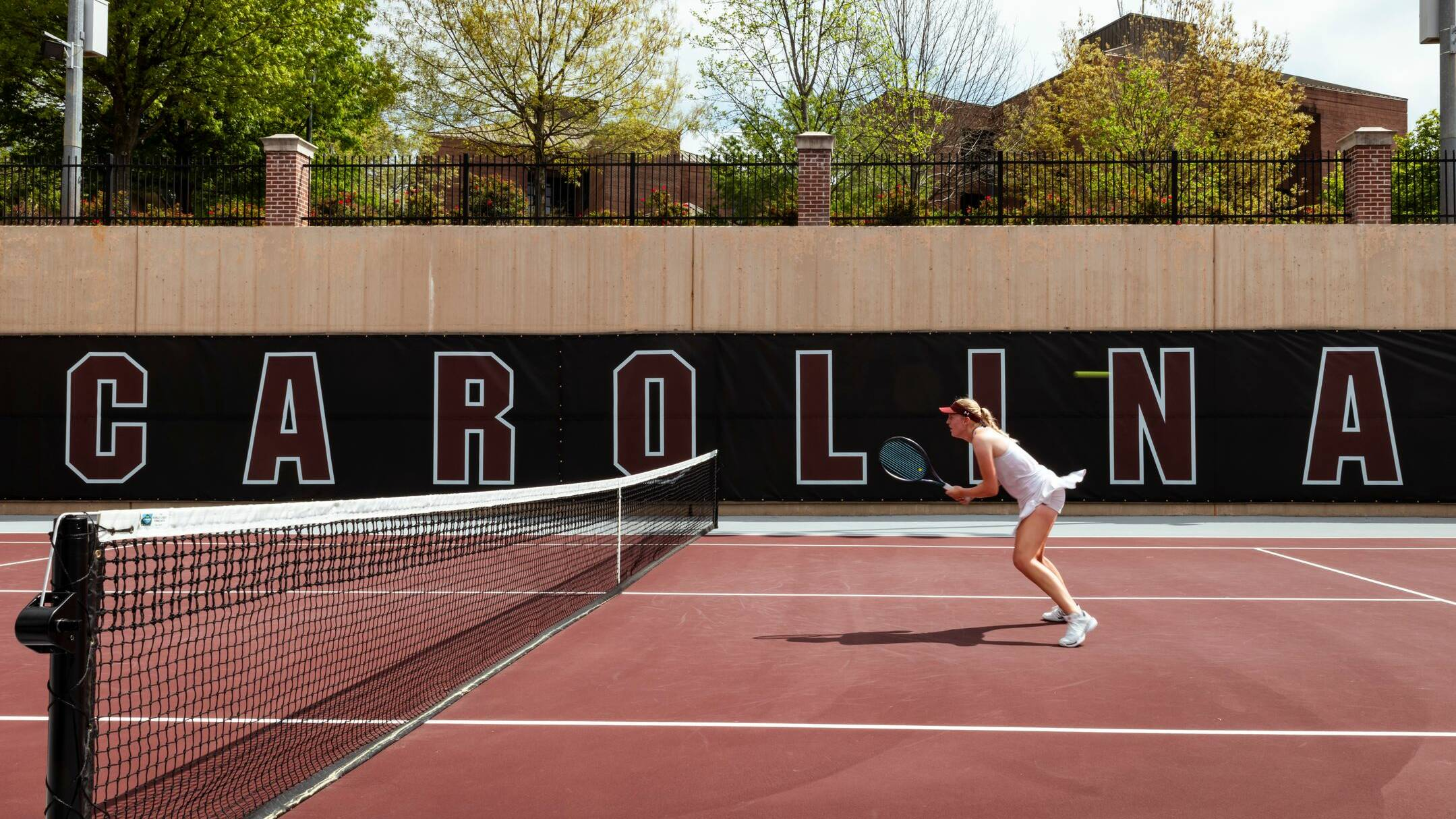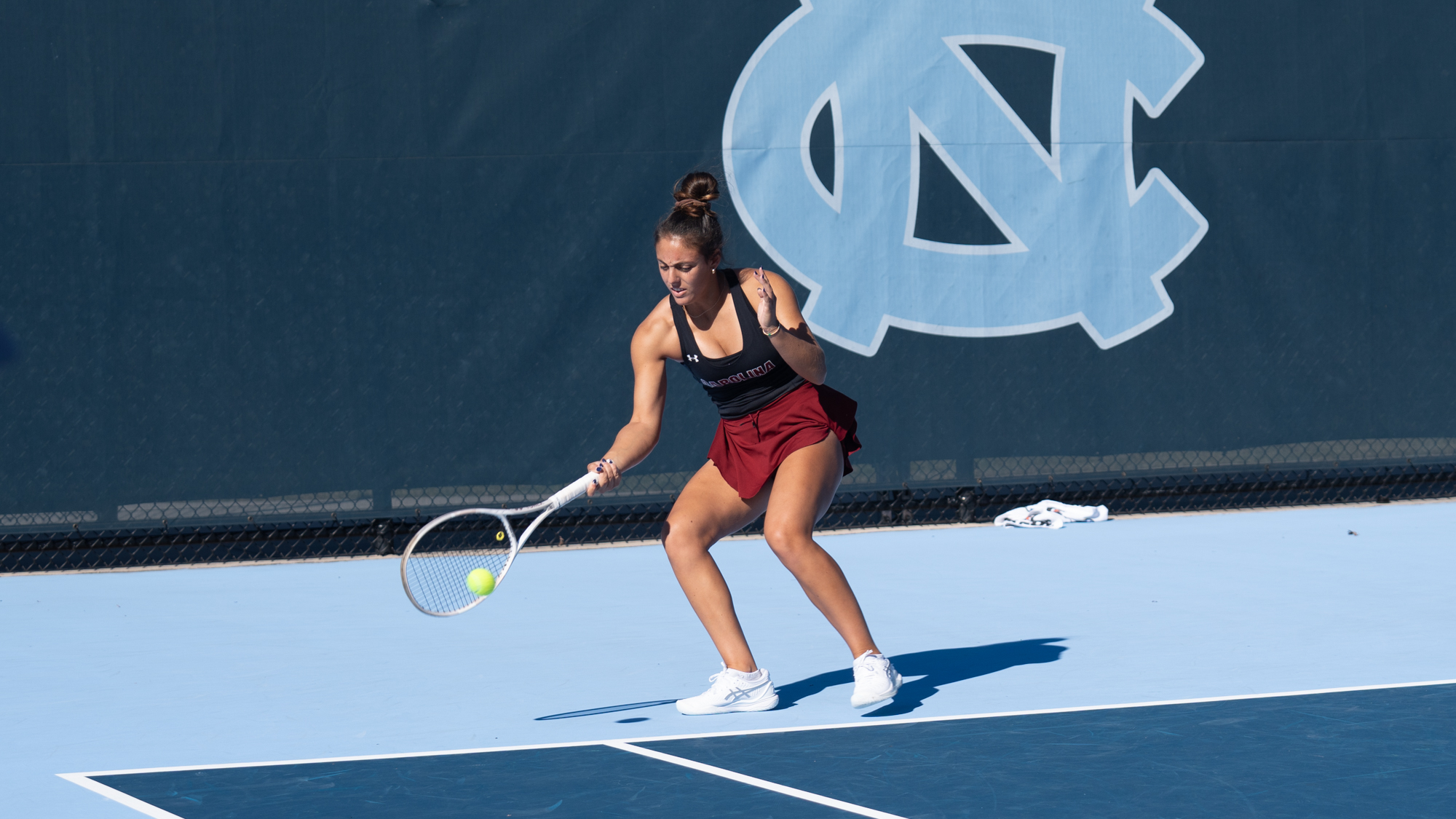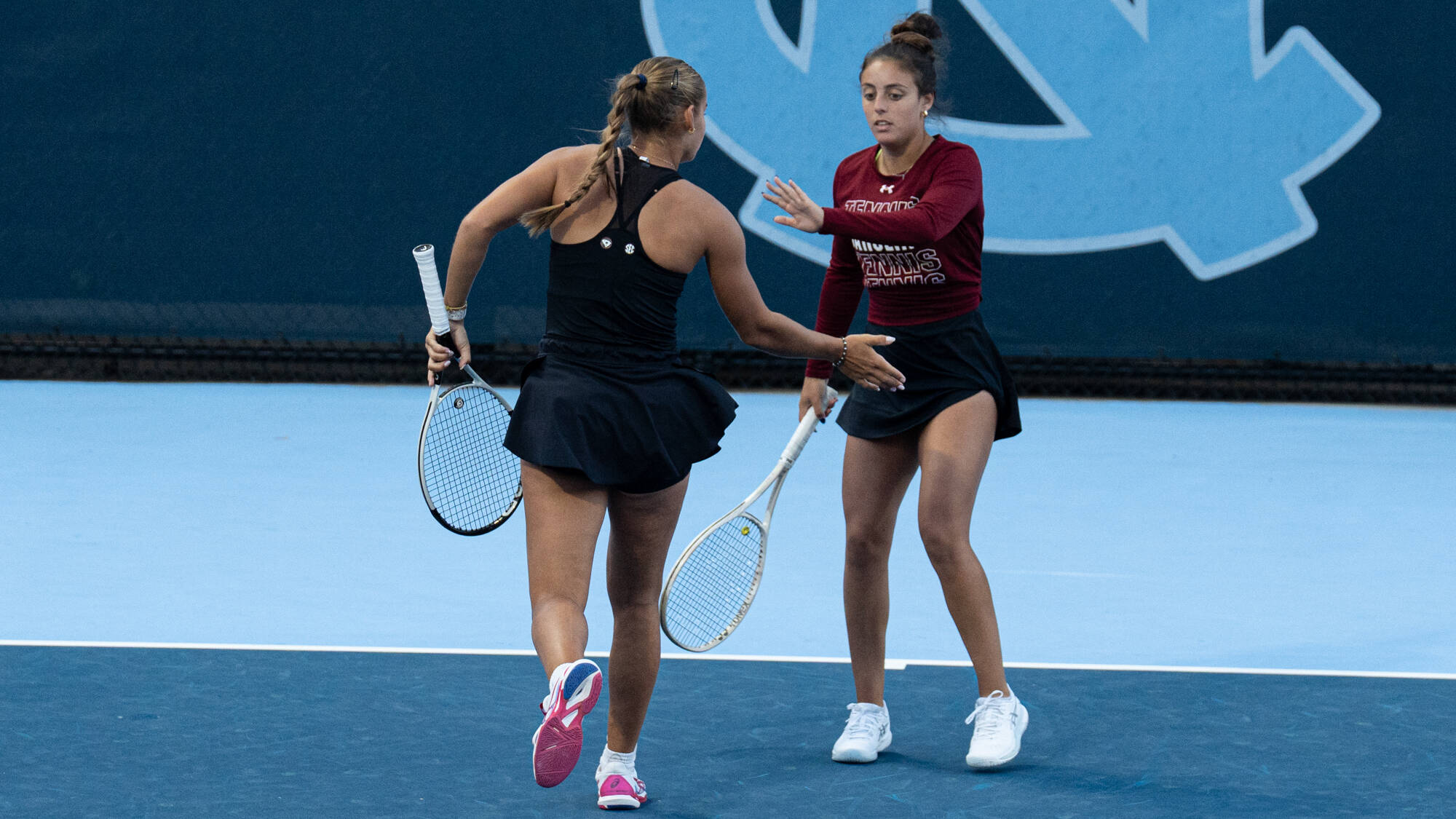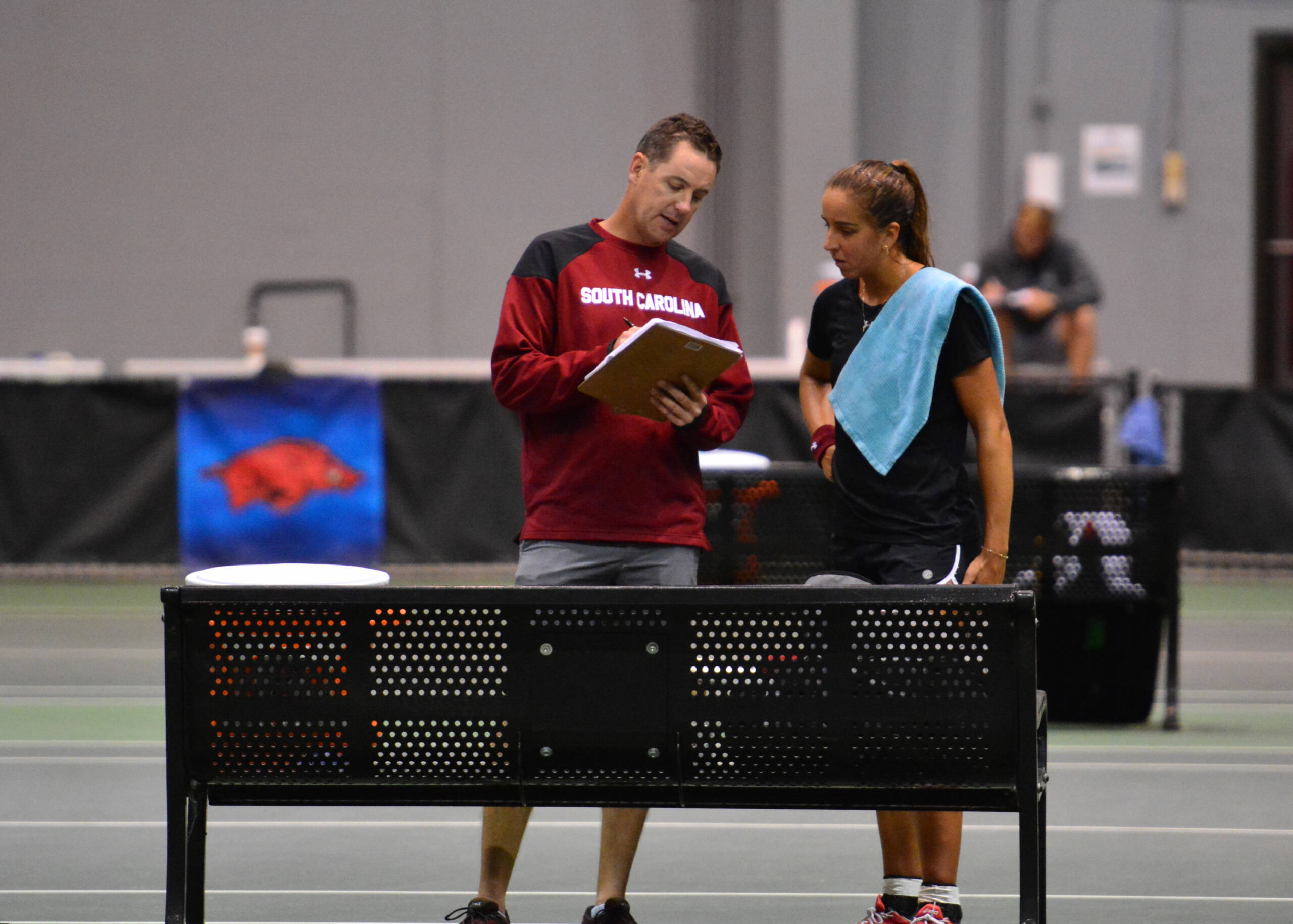
Player Development and Unique Training Methods Propel Women's Tennis
April 6, 2016

Kevin Epley has elevated three women’s college tennis programs into the top 10 national rankings during his career. Now in his fourth year at South Carolina, and twelfth year overall as a head coach, Epley’s unique training methods focus on player development, and the rise of the Gamecock program shows that his system is paying off.
“We’re just trying to get the most bang for the buck,” Epley said. “We want the student-athletes to be able to improve as quickly as possible, and we’re getting pretty efficient with it. It’s a puzzle because you know how much work they need, and you know how little time you have. Each year we’re building more drills that are specific to each player.”
In addition to making the most of their time, at the heart of this system is the idea that tennis training and development is not “one size fits all.”
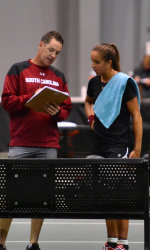
“So many coaches come out, and they throw the balls out and say ‘What do you want to do today,’ ” Epley said. “I’ve always tried to figure how to maximize time with 11 people. If we’re a developmental program, it’s going to take time to develop each player. They have specific class schedules, so you have to figure out how to manage all of that. In trying to create the best developmental program, you have to figure out how to manage time with only two coaches.”
Epley’s system involves systematic practice planning, technology and video work, individual-based training and fitness, and a competitive culture.
“I’ve been working for years trying to get a systematic training program where we don’t reactively make practice on a day to day basis, but have a syllabus for a year and break down our practices day by day going over the progressive concepts each week,” Epley explained. “We try to run a program that is tangible, where people see it, and say, ‘That is South Carolina tennis.’ So we have to build progressively on each concept.”
Tools of Progressive Training
From a fitness standpoint, Epley’s system focuses a lot on heart rate training, which he finds to be very efficient.
“We had a heart zone specialist come in and work with us to put together a program that is not only less time intensive, but also more productive,” Epley explained. “It gets us off the court, because we do a lot of pounding on the court. So we do a lot of our fitness stuff on the Keiser exercise bikes, and we do it by heart zone training.”
“Everyone’s game-style is different,” said junior Caroline Dailey. “One person may be quicker and their points might be shorter, so you train them for more of the quick bursts. Other people may stay out there longer, so you train them with more endurance. I definitely think it has helped me become a better player. I feel like I’m in a lot better shape. You can see the difference, and you’re able to last a lot longer throughout matches and recover quicker between points.”
“Again, it’s a comprehensive approach that is pretty unique to us,” Epley added. “We also have a philosophy, we call a performer philosophy, which is heart, mind, and legs going all out, every day. We have a certain culture here that we are required on a daily basis to proactively create and manage.”
Epley and assistant coach Jeff Nevolo have a few tools in place to make the system work, such as high tech ball machines.
“We program these four ball machines with our I-phones, and can give specific drills to our players,” Epley said. “So if we were to give a lesson on the ball machine for slices on Monday, then on Tuesday we could give her homework to go and program the machines to run some drills for her so she can work on it. Then on Wednesday we can see about the progress.”
That’s what we pride ourselves on ââ’¬” spending hours on the court with each person, developing each player and a developmental plan that is specific to their game styles.
Kevin Epley, head coach
The student-athletes can send files to the coaches through a program called “Coach’s Eye,” which allows Epley to make adjustments without a lot of repetition work.
“We get a lot more time efficient that way,” Epley said. “We also do a lot of specific tactical things with the machines, especially with doubles and positioning and so on. All of that is progressive as well. Using those machines as part of a practice supplement is something pretty unique to us.”
The key to Epley’s methods is that it is an individually based program.
“That’s what we pride ourselves on ââ’¬” spending hours on the court with each person, developing each player and a developmental plan that is specific to their game styles,” Epley said.
The individual approach also carries over into the training of doubles tandems.
“We have a very specific doubles approach that we use that is part of the systematic training, isolating each person on the court and then teaching specific skill sets and putting them together and running playbooks,” Epley said.
Another part of the progressive training puzzle is creating a competitive culture.
“In afternoons during the fall, we do all of this progressive learning,” Epley said. “We will play points where everything is recorded. Everything is fed into our documents, and we rank the players on a day to day basis over a whole spectrum of activities such as hitting targets and serves. We keep those competitive juices going, day in and day out, to get them in that competitive mind set each day. So rather than coaxing them to work hard, they know that they’re sitting No. 8 and they have to get a little more out of the drill. We can put them in scenarios where they are driven by winning, but we’re actually isolating the activity we want to work on by creating stipulations within the drill. A lot of times, they figure out how to do things on their own without the coach having to direct them.”
Talent Wasted If Not Developed
Every coach wants to have the best players, but maximizing the abilities of each student-athlete is what drives Epley.
“In tennis you can have players who are six-feet, three-inches tall, with a big serve, or you can get a four-feet, eleven inches, girl who has no serve, but runs around a lot,” Epley said. “You can’t train them the same way if you want to develop them.”

“He personalizes the training to our own bodies,” said freshman Rachel Rohrabacher. “Everyone is doing the workout, but it’s based on their heart rate and their body. I think it takes away a lot of the risk of injury in some ways. We’re working hard, but we’re not as tired so you can put more energy into practices.”
Epley added that his ideal training scenario is to have two-a-day training.
“A lot of teams just do one long afternoon practice,” Epley said. “We get them out for an hour in the morning, and bang something out, and then we have two hours of training in the afternoon. You get diminishing returns, emotionally and mentally, after a two hour period. So you have to break it up. It’s still the same amount of overall practice time, but with this, you’re refreshing the brain so you can come back and hit the ball a little cleaner.”
At every step in his career, the student-athletes have responded favorably.
“It takes about three years minimum to get the culture right,” Epley said. “Once the culture is right, a new player coming in doesn’t know any different. They think that this is how it’s done in college tennis. Coming into the program in the first year, it’s a big change. When a new coach comes in, you’re the outsider coming in to what they already know. It takes a little time to break free of that, but now it’s all good.”
“At first, it’s different,” Dailey said. “But right away, we started seeing results from everybody. If you stick to everyone just doing the same type of running or whatever, some won’t get as much out of it as the others. This is a good way to get the most out of everybody. Everyone’s body is different.”
Make no mistake, recruiting is still critical, but Epley emphasizes that time spent in development can be a difference-maker.
“I’m an ‘older school’ type of coach who wants to develop players,” Epley said. “You have to decide whether you want to spend your time out there on the court making someone better, or are you going to spend more time out there on social media building your recruiting platforms and what not. Either way can work. What that means is that we can create a niche. Some people are spending all of their time on recruiting and not being a developmental coach.”
The System is Working
Seeing South Carolina climb back into the top 10 in the national rankings this spring is no small achievement, but there are other numbers that justify Epley’s faith in his system. Every player in the country is ranked in a Universal Tennis Rating (UTR), and South Carolina currently ranks No. 1 in the nation for playing above its UTR rating.
“It’s a pretty sophisticated and a pretty accurate rating system,” Epley said. “We’re No. 23 in that system, but we’re ranked No. 8 in the country. So we’re playing that much above. That’s the niche we are in because we spend so much time developing. They improve so much when they get here, that they’re actually playing above their rating. That’s what we pride ourselves in.
“We’re may take some players who weren’t as highly recruited. One of the criteria in our recruiting is to get a very passionate kid, who wants to work hard. A lot of schools sign kids early based on rankings. We don’t really do that. We have them come watch our training methods and see what we’re doing. It’s not for everybody. It’s pretty intense.”
“He selectively picks people who will fit into this program and would adjust well to it,” Rohrabacher said. “So he does a good job of that. It is new territory at first, and it can be difficult for anyone, but I think all of us have picked up on it pretty well.”
